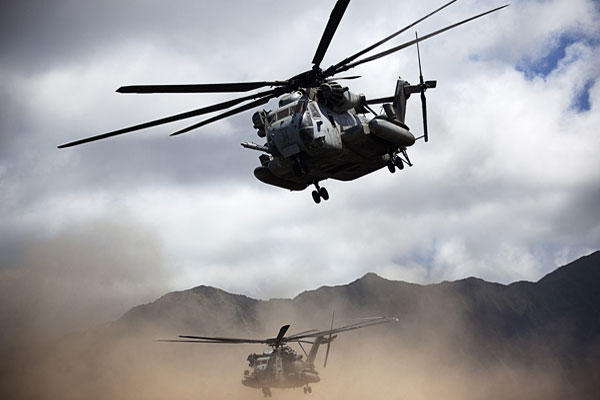The two helicopters that collided off the coast of Hawaii in January were from the Marine Corps aviation community most affected by readiness shortfalls and maintenance backlogs, the commandant of the Marine Corps told a Senate panel Wednesday.
During a hearing before the Senate Appropriations Committee's subcommittee on defense regarding Navy and Marine Corps budget issues, Gen. Robert Neller said CH-53E Super Stallion pilots were hard-pressed to maintain their currency on the platform with fewer aircraft available to fly.
Twelve Marines were killed in the Jan. 14 helicopter collision that took place during a routine night training mission off the coast of Oahu. Neller said Wednesday that the cause of the crash had yet to be determined as salvage crews continue to work to dredge up debris.
"Just an update, the air mishap board is still trying to recover all the pieces of the plane and more important all the remains," he said. "And they're on the north shore of Hawaii, which this time of year is big waves and swells, so there's a salvage ship there and they have been challenged to get out there and do their business, but we'll stay at it until we can get to the bottom of what happened."
As Sen. Dick Durbin noted, aviation deaths in the Marine Corps in the last year have reached a five-year high, with 24 military fatalities in six different mishaps since January 2015, according to data from the Naval Safety Center. The Marine aviation mishap rate reached a ten-year high in 2014, with 15 mishaps that caused at least $2 million in damage or resulted in loss of life.
"When we talk about increasing procurement and such, I'm all for that," the senator from Illinois said. "But if our budget is not designed to prepare for readiness, to protect the lives of the Marines and sailors and others, then we are falling far short of our responsibility."
Neller said all elements of the Marine Corps aviation community were facing readiness challenges, but the Super Stallion community was likely the most challenged due to high operational tempo, shortfalls in available aircraft and maintenance issues.
The commandant said some of the uncertainty with maintenance was tied to a Navy MH-53 Sea Dragon crash in January 2014 in which three sailors were killed off the Virginia Capes while conducting mine warfare operations. In the wake of that crash, Naval Air Systems Command called for more thorough inspections of Sea Dragons and Super Stallions to improve safety standards.
"When you don't have enough aircraft to fly, then your flight hours go down and it becomes difficult to maintain your currency," Neller said.
He acknowledged that the Marine Corps "probably kept [CH-53s] in theater a little bit too long" following 15 years of war in Afghanistan and Iraq rather than funneling them into maintenance depots. Now, he said, the Marine Corps needed to rebuild the readiness of its fleet.
Neller stopped short of proposing that aircraft maintenance and readiness shortfalls had resulted in the deaths of Marines. But he said an ongoing recapitalization effort that will conclude with the introduction of the CH-53K King Stallion to replace the Super Stallion in the early 2020s is set to get Marine Corps aviation back on track.
"We have a plan and we believe we have sufficient funding to do that, it's just not going to happen overnight," he said. "The combination of fielding new aircraft, more rapid procurement, getting the depots to get more throughput, then we get more ready basic aircraft on the flight line and we increase our hours."
-- Hope Hodge Seck can be reached at hope.seck@military.com. Follow her on Twitter at @HopeSeck.

























